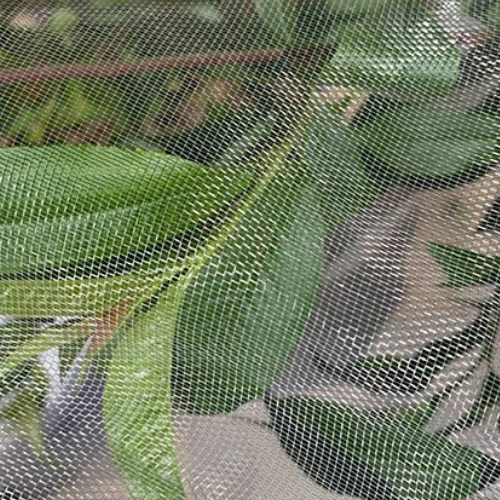-
 Afrikaans
Afrikaans -
 Albanian
Albanian -
 Amharic
Amharic -
 Arabic
Arabic -
 Armenian
Armenian -
 Azerbaijani
Azerbaijani -
 Basque
Basque -
 Belarusian
Belarusian -
 Bengali
Bengali -
 Bosnian
Bosnian -
 Bulgarian
Bulgarian -
 Catalan
Catalan -
 Cebuano
Cebuano -
 China
China -
 Corsican
Corsican -
 Croatian
Croatian -
 Czech
Czech -
 Danish
Danish -
 Dutch
Dutch -
 English
English -
 Esperanto
Esperanto -
 Estonian
Estonian -
 Finnish
Finnish -
 French
French -
 Frisian
Frisian -
 Galician
Galician -
 Georgian
Georgian -
 German
German -
 Greek
Greek -
 Gujarati
Gujarati -
 Haitian Creole
Haitian Creole -
 hausa
hausa -
 hawaiian
hawaiian -
 Hebrew
Hebrew -
 Hindi
Hindi -
 Miao
Miao -
 Hungarian
Hungarian -
 Icelandic
Icelandic -
 igbo
igbo -
 Indonesian
Indonesian -
 irish
irish -
 Italian
Italian -
 Japanese
Japanese -
 Javanese
Javanese -
 Kannada
Kannada -
 kazakh
kazakh -
 Khmer
Khmer -
 Rwandese
Rwandese -
 Korean
Korean -
 Kurdish
Kurdish -
 Kyrgyz
Kyrgyz -
 Lao
Lao -
 Latin
Latin -
 Latvian
Latvian -
 Lithuanian
Lithuanian -
 Luxembourgish
Luxembourgish -
 Macedonian
Macedonian -
 Malgashi
Malgashi -
 Malay
Malay -
 Malayalam
Malayalam -
 Maltese
Maltese -
 Maori
Maori -
 Marathi
Marathi -
 Mongolian
Mongolian -
 Myanmar
Myanmar -
 Nepali
Nepali -
 Norwegian
Norwegian -
 Norwegian
Norwegian -
 Occitan
Occitan -
 Pashto
Pashto -
 Persian
Persian -
 Polish
Polish -
 Portuguese
Portuguese -
 Punjabi
Punjabi -
 Romanian
Romanian -
 Russian
Russian -
 Samoan
Samoan -
 Scottish Gaelic
Scottish Gaelic -
 Serbian
Serbian -
 Sesotho
Sesotho -
 Shona
Shona -
 Sindhi
Sindhi -
 Sinhala
Sinhala -
 Slovak
Slovak -
 Slovenian
Slovenian -
 Somali
Somali -
 Spanish
Spanish -
 Sundanese
Sundanese -
 Swahili
Swahili -
 Swedish
Swedish -
 Tagalog
Tagalog -
 Tajik
Tajik -
 Tamil
Tamil -
 Tatar
Tatar -
 Telugu
Telugu -
 Thai
Thai -
 Turkish
Turkish -
 Turkmen
Turkmen -
 Ukrainian
Ukrainian -
 Urdu
Urdu -
 Uighur
Uighur -
 Uzbek
Uzbek -
 Vietnamese
Vietnamese -
 Welsh
Welsh -
 Bantu
Bantu -
 Yiddish
Yiddish -
 Yoruba
Yoruba -
 Zulu
Zulu
Durable Stainless Steel Grid Mesh for Versatile Applications and Strengthening Structures
The Versatility of Stainless Steel Grid Mesh
Stainless steel grid mesh is an innovative and versatile material that has found numerous applications across various industries. Renowned for its durability, corrosion resistance, and aesthetic appeal, stainless steel grid mesh has become a preferred choice for architects, engineers, and contractors alike. This article will explore the characteristics, applications, and benefits of stainless steel grid mesh, illustrating why it is an invaluable asset in modern construction and design.
Characteristics of Stainless Steel Grid Mesh
Stainless steel grid mesh is made from high-quality stainless steel, which is an alloy primarily composed of iron, carbon, and a minimum of 10.5% chromium. This unique composition endows the material with exceptional resistance to rust, corrosion, and stains, making it suitable for both indoor and outdoor use. Additionally, the mesh is available in a variety of grades, sizes, and configurations, allowing for tailored solutions to meet specific project requirements.
The grid structure itself can vary significantly. From fine mesh for filtration applications to larger openings for fencing or architectural purposes, the versatility of this material is unmatched. Furthermore, stainless steel grid mesh can be produced through various manufacturing techniques, including weaving, welding, and machining, affording even more customization options.
Applications of Stainless Steel Grid Mesh
The applications of stainless steel grid mesh are diverse and expansive. In the construction industry, it is commonly used for reinforcement in concrete, providing improved structural integrity while allowing flexibility in design. Architects often utilize stainless steel grid mesh in facades, railings, and decorative elements, adding both functionality and beauty to buildings. Its transparent nature can enhance natural light penetration while providing safety and security.
In the automotive and aerospace sectors, stainless steel grid mesh plays a crucial role in manufacturing components that require lightweight yet strong materials
. It can be found in filters, sound barriers, and safety meshes, contributing to the overall safety and efficiency of vehicles and aircraft.stainless steel grid mesh

Another significant application is in the agricultural sector, where stainless steel grid mesh serves as fencing for livestock and crops. Its robust durability ensures long-lasting protection against predators and environmental factors, while its non-corrosive nature guarantees that it can withstand harsher conditions.
Benefits of Stainless Steel Grid Mesh
One of the most compelling reasons to choose stainless steel grid mesh is its longevity. Unlike other materials that may degrade over time, stainless steel maintains its structural integrity and appearance for years, reducing the need for frequent replacements and repairs. This longevity translates to cost savings in the long run.
Additionally, stainless steel grid mesh is eco-friendly. Being fully recyclable, it can be repurposed at the end of its lifecycle without contributing to landfill waste. This sustainability aspect appeals to environmentally conscious consumers and industries alike.
Furthermore, the maintenance of stainless steel grid mesh is minimal. Its resistance to corrosion means that it can be easily cleaned when necessary, preserving its aesthetic appeal without the need for specialized cleaning agents or processes.
Conclusion
Stainless steel grid mesh stands out as a powerful material in contemporary design and construction. Its robust characteristics, wide-ranging applications, and numerous benefits make it an indispensable choice for many industries. Whether used for structural reinforcement, architectural design, or agricultural fencing, stainless steel grid mesh not only meets functional requirements but also enhances the overall aesthetic of any project. As innovation continues to drive its development, we can expect stainless steel grid mesh to remain a vital material for years to come.
-
The Sunshade Net Can Block Ultraviolet RaysNewsAug.11,2025
-
Main Application and Technology of Nylon ScreenNewsAug.11,2025
-
Green Anti UV Sunshade Net: The Perfect Combination of Ecological Friendliness and Practical PerformanceNewsAug.11,2025
-
Explore the Sunshade NetNewsAug.11,2025
-
Application and Development of Nylon Screen in Fuel Processing and TreatmentNewsAug.11,2025
-
Application and Advantages of Nylon Screen for AquacultureNewsAug.11,2025











